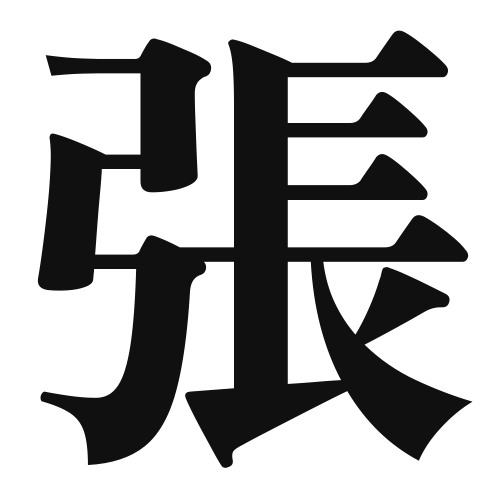1. Overview of Meaning
The kanji “張” (pronounced “chō” or “haru”) primarily means “to stretch,” “to expand,” or “to spread.” It can also refer to “to put up” or “to set up,” such as in the context of a tent or a banner.
2. Formation and Radical
The kanji “張” is a phonetic-ideographic character (形声文字), which means it combines both meaning and sound elements. The left part, “弓” (bow), suggests a connection to tension or stretching, while the right part, “章,” provides the phonetic component.
The radical of “張” is “弓,” which relates to archery and tension, reinforcing the idea of stretching or expanding.
3. Examples of Usage
Common words and phrases that include “張” are:
- 張る (haru) – to stretch or to spread
- 張り紙 (harigami) – a posted notice or sign
- 張力 (chōryoku) – tension or stress
Example sentence in daily conversation:
「このテントを張るのを手伝ってくれませんか?」 (Kono tento o haru no o tetsudatte kuremasen ka?) – “Could you help me set up this tent?”
4. Synonyms and Antonyms
Similar kanji with related meanings include:
- 拡 (kaku) – to expand, which emphasizes the idea of making something larger.
- 伸 (shin) – to extend, which focuses on lengthening something.
Antonyms include:
- 縮 (shuku) – to shrink or to contract, which conveys the opposite action of “張.”
5. Cultural and Historical Background
The kanji “張” has cultural significance in Japan, often associated with festivals where banners are displayed. It is also used in various proverbs and idiomatic expressions.
For example, the phrase “張り切る” (harikiru) means “to be enthusiastic” or “to be eager,” reflecting the idea of stretching one’s efforts or intentions.
